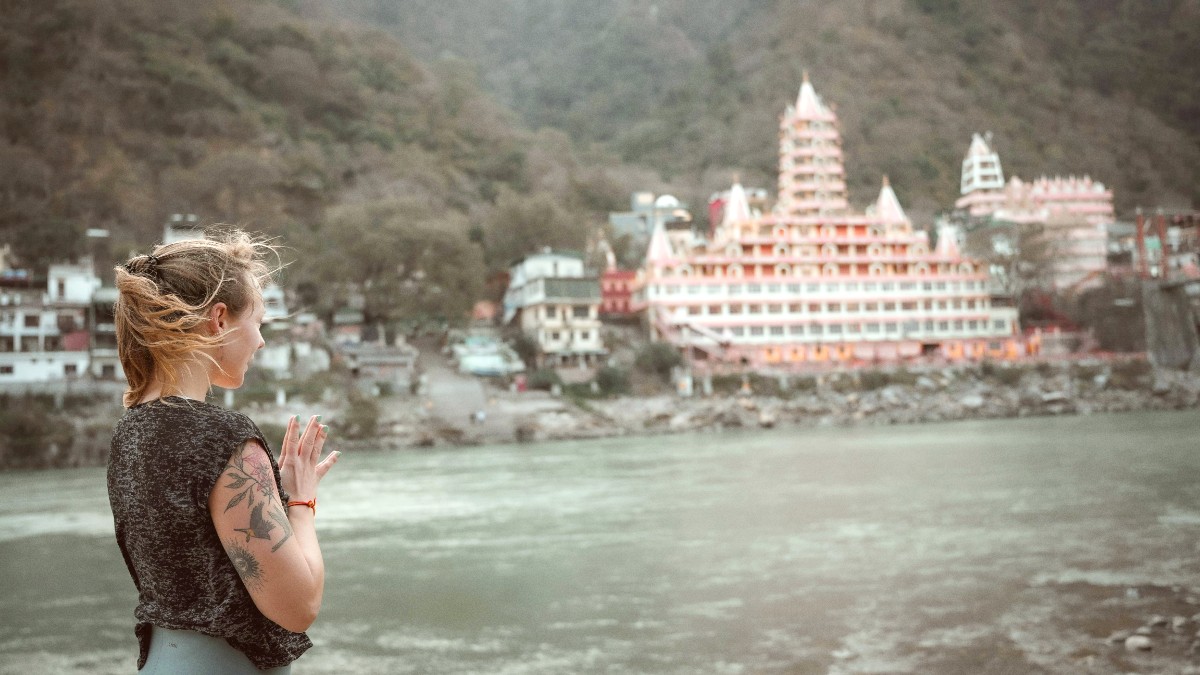
Uttarakhand Uttaranchal, India
Winter (October to February) brings pleasant and cool weather to Haridwar. Skies are generally clear, offering excellent visibility for sightseeing and photography. Average temperatures range from 8°C (46°F) to 25°C (77°F). Mornings and evenings can be quite chilly, especially in December and January, sometimes dropping to around 5°C (41°F) or even lower. Daytime temperatures remain mild and comfortable. Precipitation is minimal during these months. Humidity levels are low, making outdoor activities agreeable. This season often counts as the most enjoyable for city exploration.
Summer (March to June) brings hot and dry conditions. Temperatures range from 25°C (77°F) to 40°C (104°F), frequently exceeding 45°C (113°F) in peak summer months, especially May and June. The air becomes dry and dusty, and strong winds can sometimes occur. Humidity levels are low initially but begin to rise as the monsoon approaches in June. The intense heat can render daytime sightseeing challenging, making seeking shade and staying hydrated essential. Many locals and pilgrims visit in the early morning or late evening during this time.
During summer months (May-June), the heat can be intense. Visitors should take precautions against heatstroke and dehydration. Wear light, loose-fitting cotton clothing, use Sunscreen, wear a hat, and drink plenty of water. Plan outdoor activities for early mornings or late evenings.
In late December and January, dense fog can occur, notably in the mornings. This can impact visibility for road travel and cause delays in train and flight schedules (especially for flights to Dehradun and trains from Delhi).
May to August
Fewer tourists, budget-friendly prices, lush green monsoon landscape.
Extreme heat or heavy rains, high humidity, strong river currents.
March to April & Sept to Oct
Moderate crowds, good weather, reasonable prices, refreshed landscape post-monsoon.
March/April can get warm, September/Oct might have lingering humidity.
October to March
Ideal weather for sightseeing, comfortable temperatures for activities.
Heavy crowds, higher accommodation prices, longer queues, crowded transport.
October to March delivers the most comfortable weather for religious dips in the Ganga and temple visits. The water temperature cools but stays comfortable, and the air temperature supports prolonged outdoor presence.
Rajaji National Park typically opens from November 15 to June 15. The winter months (November to March) are ideal for safaris as the weather stays pleasant and wildlife spotting can be easier due to less dense foliage. Avoiding peak summer heat for safaris is wise.
October/November, Festival of Lights.
February/March, honoring Lord Shiva.
January, celebrating harvest.
Every six years, a smaller scale Kumbh.
July/August, Shiva devotees' pilgrimage (can affect travel).
India presents various visa types, and the application process has seen streamlining in recent years, especially with the e-Visa system.
This electronic authorization for travel to India is the most common option for tourists from many countries.
If not eligible for an e-Visa, or if you prefer a traditional sticker visa, you can apply through the Indian Embassy or Consulate in your home country.
Costs can differ based on your travel style, from a budget-conscious pilgrimage to a luxury retreat.
The official currency of India is the Indian Rupee (INR), symbolized as ₹. Notes are commonly ₹10, ₹20, ₹50, ₹100, ₹200, ₹500, and ₹2000. Coins are ₹1, ₹2, ₹5, and ₹10.
ATMs are widely available throughout Haridwar, especially near the railway station and main markets. This often provides the most convenient way to withdraw cash, with generally better exchange rates than currency exchange counters. Inform your bank of your travel plans. Credit and debit cards are accepted at larger hotels, mid-range restaurants, and bigger retail shops. Cash is for street food, local transport, and small shops.
| Travel Style | Daily Cost (INR) | Daily Cost (USD est.) |
|---|---|---|
| Budget Traveler | ₹1,500 - ₹3,000 | ~$18-$36 |
| Mid-range Traveler | ₹3,000 - ₹7,000 | ~$36-$84 |
| Luxury Traveler | ₹7,000+ | ~$84+ |
Haridwar, while generally welcoming, presents specific aspects visitors should consider for a secure and healthy trip.
For general travelers, no mandatory vaccinations are for entry to India.
If arriving from or transiting through a Yellow Fever risk country, a valid certificate is needed (10 days old).
4-6 weeks before trip for Hepatitis A/B, Typhoid, Tdap, MMR, Japanese Encephalitis, Rabies (if applicable), Polio booster.
Traveler's Diarrhea ("Delhi Belly") is the most common issue.
To prevent: practice strict food and water hygiene. Drink only bottled water (check seal), filtered water, or water purified using a Portable water filter or Purification tablets. Avoid ice unless from purified water. Eat hot, freshly cooked food; no raw salads or unpeeled fruits from street vendors.
Carry a Basic first aid kit with rehydration salts (ORS) and antidiarrheal medication (Loperamide).
Mosquito-borne diseases like Dengue and Chikungunya are present, especially during monsoon. Use Insect repellent with DEET or picaridin (at least 30% DEET or 20% Picaridin). Heat stroke risk in summer; stay hydrated, avoid peak sun hours, wear light clothing and a Wide-brimmed hat.
Haridwar has government and private hospitals. For advanced care, Max Healthcare Hospital in Dehradun (~50 km) is available.
Abundant local pharmacies. For prescription medications, carry enough for your trip.
Police: 100, Ambulance: 102, Fire: 101, National Emergency: 112.
Haridwar is generally a safe city, but like any crowded destination, petty crime can occur.
Purchase a comprehensive travel insurance policy before your trip. This coverage should include:
Hospital stays, doctor visits, prescription medications.
Coverage for medical evacuation back to your home country if needed.
Trip cancellation or interruption, lost/stolen luggage reimbursement.